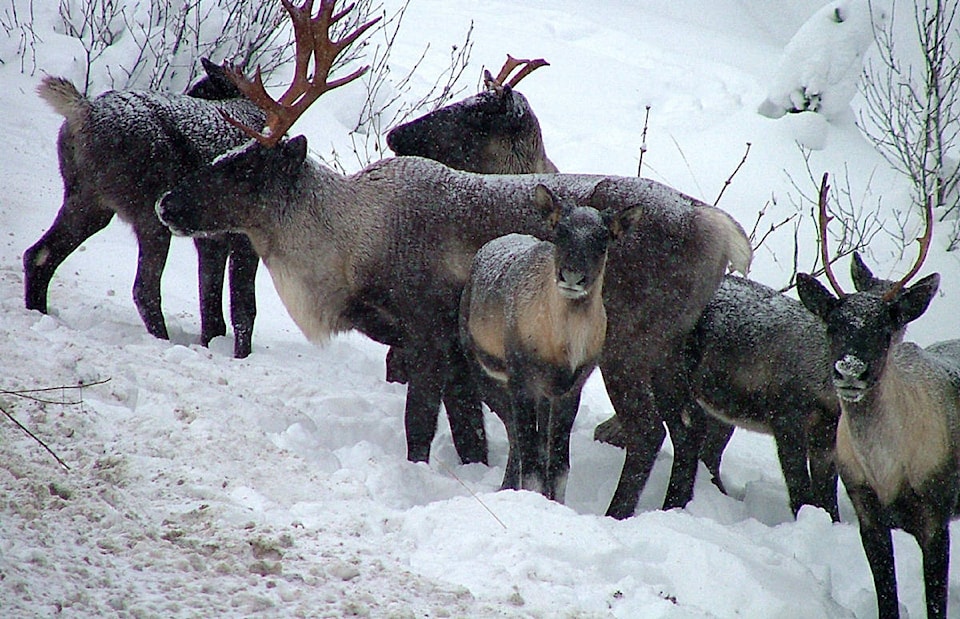The provincial government, in partnership with Cheslatta Carrier Nation, is attempting a relatively new technique to help the Tweedsmuir Park’s caribou herd.
Lichens will be transplanted from the Fort St. James area to Cheslatta’s territory, near the Tetachuck Lake.
In 2014, the Chelaslie River wildfire burned roughly 80 per cent of the Tweedsmuir-Entiako caribou herd’s low-elevation winter range, decreasing the amount of food available to these caribou. During the winter, mountain caribou typically feed on lichens that grow on the ground and in the tree branches of low-elevation forests.
“Food availability could be an issue for some time, as lichen typically takes 30 to 70 years to regenerate post-fire,” explained Gabrielle Price, senior public affairs officer for the Ministry of Forests, Lands and Natural Resource Operations.
“Although the number of individuals in the herd has remained relatively stable since the fire, this could have long-term impacts on the population,” she added.
The so-called ‘Tweedsmuir lichen restoration project’ aims to mitigate these impacts by accelerating lichen recovery in the home range of the Tweedsmuir-Entiako caribou herd. Field activities for year one are well underway in the area north of Tetachuck Lake and have been conducted by a crew including two Cheslatta technicians, a ministry biologist and a contracted ecologist.
The crew has established restoration sites, manually seeded these sites with lichen, and set up areas for aerial seeding which will occur in the fall. Manual seeding involves spreading lichen by hand while aerial seeding requires a helicopter.
The provincial government says there have been previous attempts at transplanting lichen for the purposes of restoring caribou habitat in B.C. Small-scale lichen restoration trials have occurred in the Mesilinka area west of Williston Reservoir, and near Chetwynd.
“Although results from these trials were promising, lichen restoration is still a relatively new technique,” said Price. “There are few wildlife species that rely on lichen as heavily as caribou, therefore transplanting lichen is not a common practice to help wildlife.”
The province says the goal for the first year of the project is to test the effectiveness of both manual and aerial seeding and its potential for use at an operational scale.
“If the trial is a success, there are plans to conduct lichen seeding on a much larger scale in the hopes of accelerating the recovery of lichen in the Chelaslie burn,” said Price.



